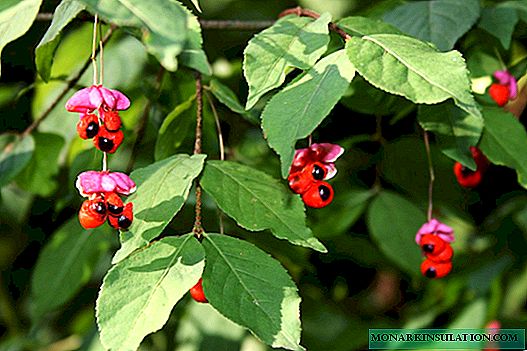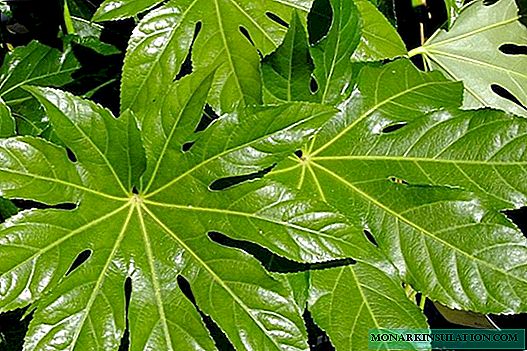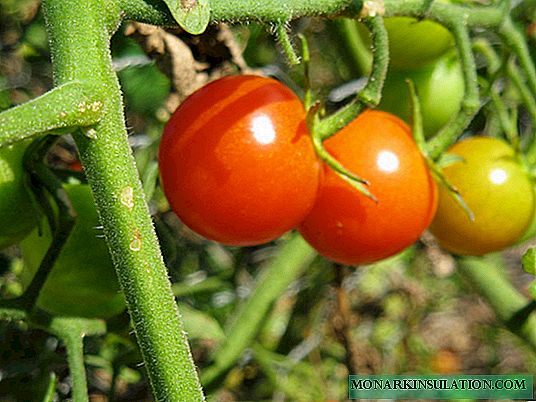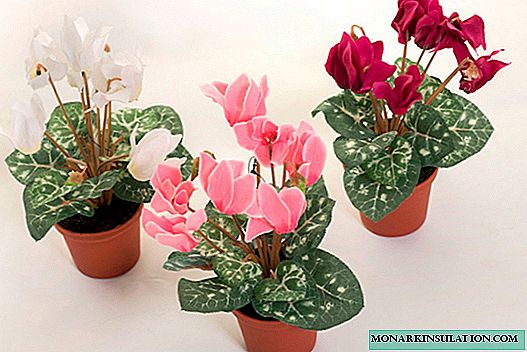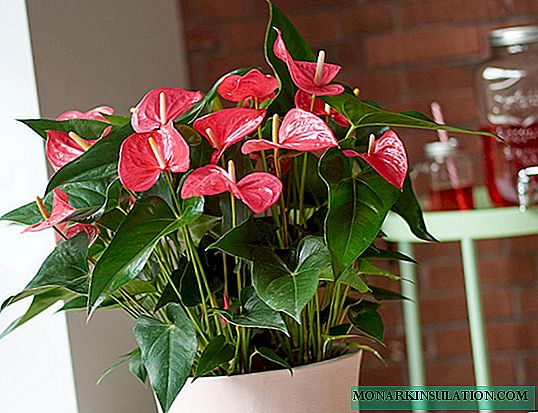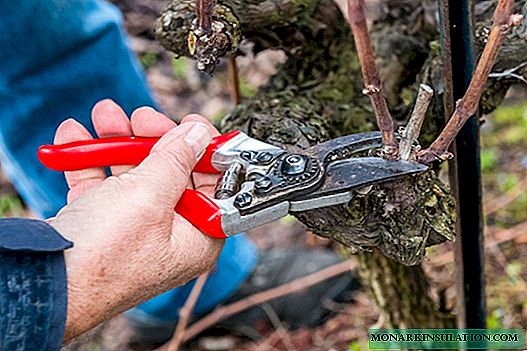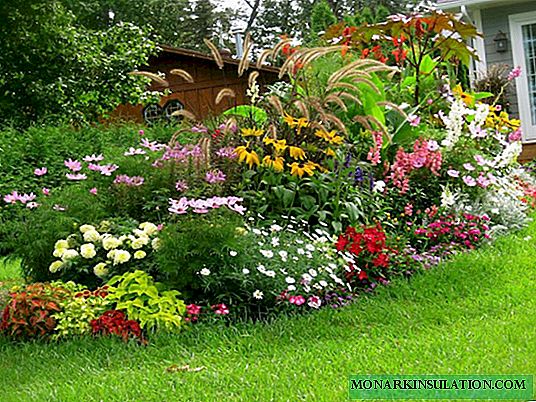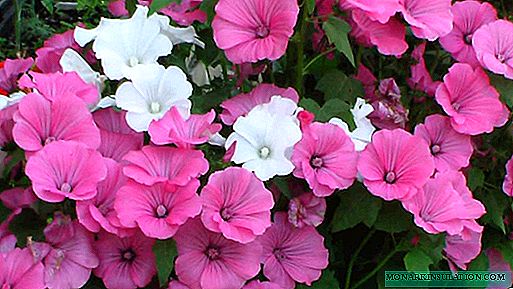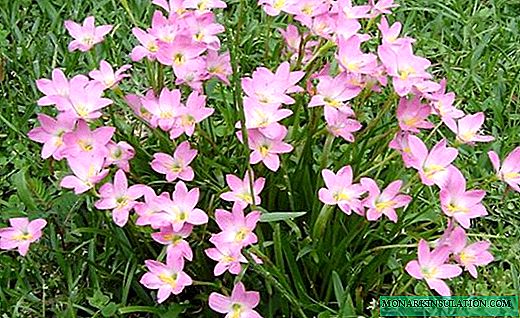Zephyranthes is a gentle bulbous perennial. The genus belongs to the Amaryllis family. It is known to many flower growers under the name “upstart”. This houseplant is not a novelty in our country and many consider it too ordinary. However, modern varieties of zephyranthes will appeal to lovers of exotic. If you take care of it correctly, then the flowering will be plentiful and frequent, which will surely appeal to adherents of miniature flower beds on the windowsill.

Plant description
Zephyranthes is a flowering bulbous plant that strewn the moist tropical forests of Central and South America with a fragrant carpet. Flowers bloom during the rainy season when the Zephyr wind begins to blow. Therefore, the name of the plant can be translated as "Zephyr flower." He is also called a room lily, an upstart, or a home daffodil.












The root system of zephyranthes is a small oblong or rounded bulb up to 3.5 cm long. A small basal neck rises above the ground, from which a few leaf rosette grows. Narrow belt-like leaves of bright green color can reach a length of 20-35 cm. The width of smooth glossy leaves is only 0.5-3 mm.
Flowering begins in April and can last all summer. A long peduncle with a single flower grows quite quickly from the center of the leaf outlet. The shape of the bud resembles a crocus. Six lanceolate petals with a pointed edge are wide open to the sides; short bright yellow anthers adorn the core. Flowers can be white, yellow or pink. The diameter of the flower is 4-8 cm. Each bud lasts only 1-3 days.
Species of house lily
Among 40 species of marshmallows that can be found in the natural environment, no more than 10-12 are grown in culture. The most common are white-flowered zephyranthes.
- Zephyrantes Atamas - a grassy perennial with a small (up to 2 cm in diameter) bulb and a shortened neck. The leaf rosette consists of 6-8 tubular leaves 15-20 cm long. White flowers with a yellow middle in diameter are 2.5-4 cm. Blooms in early spring, prefers cool rooms.
- Zephyranthes white (snow-white) - a plant up to 30 cm high. A bulb with a diameter of 3 cm has an elongated neck. White flowers with a funnel-shaped perianth reach a diameter of 6 cm. Flowering occurs from July to October.
- Zephyranthes yellow (golden). A plant with a rounded bulb and narrow leaves forms a shoot up to 30 cm high. Funnel-shaped flowers with yellow petals bloom at the beginning of winter.
- Zephyranthes pink (large-flowered) has an elongated bulb with a diameter of 3 cm and leaves with a length of 15-30 cm. Single flowers of soft pink color have a yellow core. Their diameter is 7-8 cm. Flowering begins in April.
- Zephyranthes multicolored interesting in the color of the petals. Brown and red tones predominate in their dark base, and the edges of the petals have a light pink hue. The diameter of the flower reaches 6-7 cm. Flowering occurs in January-March.





Breeding
Zephyranthes is propagated by sowing seeds and separating bulbous children. Seeds are sown immediately, because after only a few months they lose germination. Landing is done in shallow boxes with a sand-peat mixture. Seeds are distributed in the ground in shallow holes, at a distance of 3-4 cm from each other. The soil is sprayed and covered. The greenhouse must be put in a warm place with a temperature of about + 22 ° C and aired daily. Young sprouts will appear in 13-20 days. The grown seedlings are planted in pots with earth for adult plants several pieces. So it’s easier to get dense vegetation. Flowering seedlings are expected in 2-4 years.
Bulb propagation is considered a more convenient way. Nearly 4-5 young children are formed annually near older bulbs. It is enough in the spring during the transplant to carefully separate the soil from the bulbs, without damaging the roots, and to plant more freely. The adaptation period and special conditions of detention in this case are not needed. Flowering is possible a year after the planting of children.

Transfer
Transplanting zephyranthes is recommended every 2-3 years, although some growers advise doing this every spring. The pot of marshmallows should be wide and not too deep. You can use rectangular flowerpots on the entire window sill or several small containers. Some gardeners like to combine plants with different color of petals in one pot.
Zephyranthes needs a good drainage system, because it does not tolerate stagnation of water. Earth should be nutritious and light, with neutral or weak acidity. To compile the soil mixture use:
- sand;
- deciduous humus;
- turfy soil.
When transplanting, they try to remove most of the old earthen coma. After the procedure, watering is reduced for several days and try not to move the pot.

Zephyrantes Care
Caring for marshmallows at home does not require much effort, the plant is considered unpretentious and is characterized by survivability. Upstarts love the bright sun and long daylight hours. They are recommended to be placed on the southwest windowsills and in bright rooms. For the summer, it is better to bring the Zephyranthes flower to the balcony or to the garden.
The upstart prefers cool rooms, so at temperatures above + 25 ° C it suffers from heat. To alleviate the condition of the flower, you need to ventilate the room more often. The optimum air temperature is + 18 ... + 22 ° C. In winter, it is lowered to + 14 ... 16 ° C. Some varieties can withstand cold up to + 5 ° C.
There are types of zephyranthes, which after flowering need a rest period. They discard leaves, leaving only the bulbs. For several months, the pot with the plant is stored in a cool, dark room and only slightly moistens the soil.

Zephyranthes prefers moist air, but can also adapt to a drier atmosphere. So that the leaves do not dry, it is sometimes useful to spray the crown from the spray gun.
It is necessary to water the upstart very carefully, since the bulbs are prone to rot. Between watering, the soil should dry out by a third, and excess water must be immediately poured out of the pan.
During the period of active growth and flowering, it is recommended to replace ordinary water for irrigation twice a month with a solution of mineral fertilizers for flowering plants. This will help the zephyranthes maintain juicy tones and prolong flowering.
Difficulty in care
With excessive dampness and excessive watering, marshmallows are susceptible to root rot. One of the signs of rotting bulbs - leaves turn yellow and dry. In this case, you need to update the earth, remove the infected parts of the plant and carry out the treatment with fungicide.
Parasites appear on zephyranthes extremely rarely. It is only occasionally possible to detect scutes, spider mites or whiteflies. Treatment with an insecticide will relieve pests much faster than folk remedies.
Sometimes flower growers are faced with the fact that zephyranthes does not bloom. The reason may lie in the wrong selection of the pot. If it is too large and deep, the plant will actively increase the root mass, and there will be no strength left for flowering.

